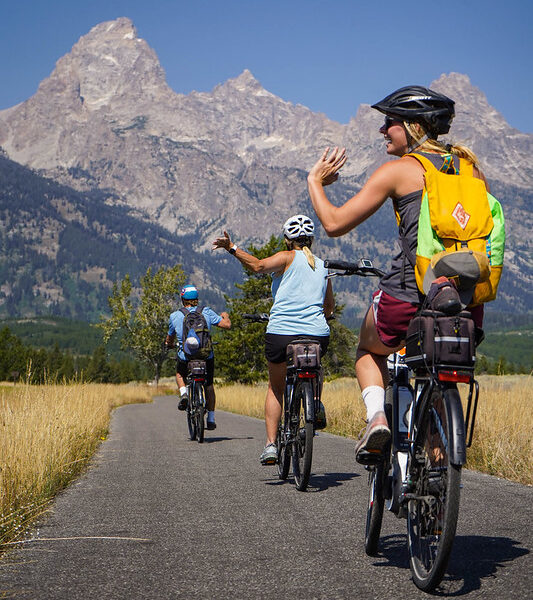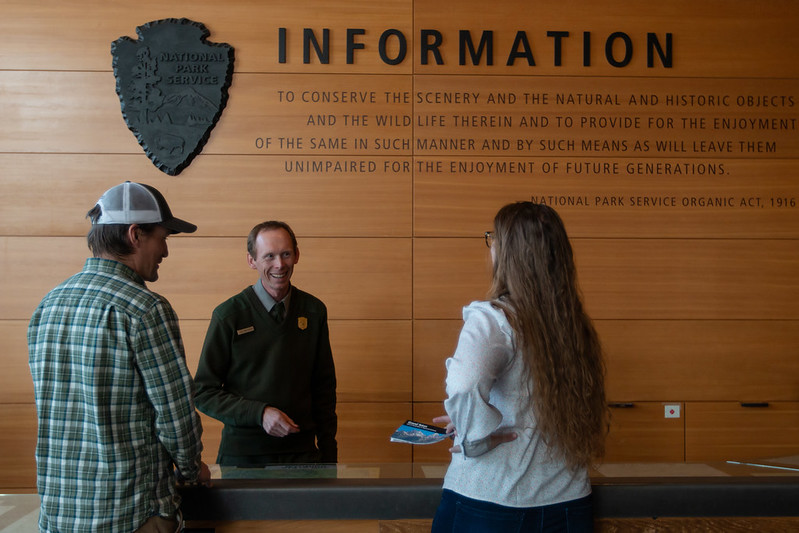Grand Teton Launching Survey of Park Users
Public meetings scheduled to promote new visitor feedback project
- Published In: Other News & Features
- Last Updated: Aug 31, 2023

With record-shattering numbers of visitors to Grand Teton National Park in 2021, managers are confident that the trend will continue in coming years — a challenge that requires informed planning and effort. (Courtesy photo from the National Park Service)
By Melissa Thomasma
Special to the Wyoming Truth
JACKSON, Wyo.—In 2021, the entire population of Los Angeles visited Grand Teton National Park — statistically speaking, at least. Just shy of 4 million people visited the 485 square-mile national park, setting a new record.
That number, park officials say, represents a decades-long trend of increasing visitation to the area and by extension, increasing impacts on the park’s amenities and resources. And it also means that managers are now planning for the future.

For the first time, the National Park is launching a public visitor feedback survey to complement data leaders have previously collected on park utilization and access. Park staff are hosting a virtual meeting on Thursday, Aug. 31 from 4 p.m. to 5:30 p.m. to share more details about their public engagement effort.
“The record-setting year [2021] is part of a larger long-term trend, visitation to the park has increased over 60% since the mid-2000s,” Jennifer Newton, park social scientist, told the Wyoming Truth. “We expect visitation to the park to continue to grow, and we want to continue to welcome visitors to have an extraordinary experience here.”
Newton said park officials “welcome everyone’s insights, including those near and far,” as well as comments from potential visitors. She said they will consider the input before any plans or decisions are made. The overall goal: improve visitor experience, safety and resource protection.
Embracing a new era
Since Grand Teton National Park’s founding in 1929, park managers and partners throughout the community have worked to balance the desire to welcome visitors and share the unique mountain experience with the need to protect and steward the region’s fragile ecological resources.
In recent years, some improvement efforts have already been implemented, Newton said. These include establishing a reservation system in camping areas, limiting the number of wedding permits available each season, specifying where commercial guides may operate within the park’s boundaries and staffing “animal jams” to ensure safety around wildlife and congested traffic patterns.

Newton’s studies also have revealed that the increase in overall traffic through Grand Teton National Park has detrimentally impacted the ecosystem in some popular areas. Previous research indicated that at least one-third of visitors saw visible erosion, vegetation loss andproblematic behavior by other visitors or groups. As of 2018, Newton’s study documented two miles of user-created trails at String Lake and .8 miles of user-created trails across 92 individual segments at Leigh Lake — in addition to 8,180 square feet of bare ground from user-created sites.
Park managers hope to learn more about visitors’ experiences, perceptions and concerns regarding issues like these; they also want to cultivate a more thorough understanding of what visitors treasure most about the area and what barriers they face in trying to enjoy the park to the fullest.
Visit Grand Teton National Park’s Visitor and Use page to read more about the strategy and goals of the survey, as well as submit comments. Park staff will host an in-person meeting regarding the public engagement process on Sept. 19 at the Teton County Library from 4 p.m. to 6 p.m. The survey is open through Oct. 10, 2023; comments will not be accepted via email, mail, social media or phone calls.













